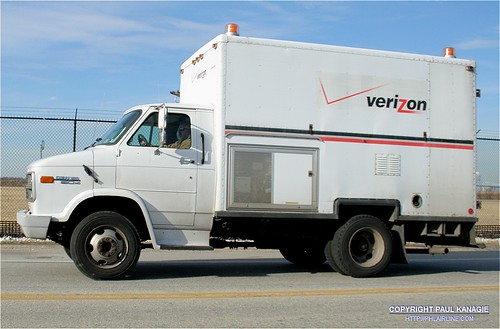
Photo Credit runway27r
I was at a BT analyst briefing during the week and at this meeting I was delighted to hear Donna Young, BT’s Head of Climate Change say that amongst other things, BT are going to start requiring suppliers to follow the BT ethos on carbon footprinting. They will be auditing suppliers on a scale of 0-3 where 0 means the supplier hasn’t started working on their carbon footprint yet and 3 indicates that they have auditable results. Further, BT will be using this scale to rule companies into or out of tender processes. Excellent.
Then this evening via April and via Bo in Nortel I came across the release from Verizon where they announced that from January 1st 2009 their target is for new gear from their suppliers to be 20% more energy efficient.
Mark Wegleitner, Verizon’s senior vice president-corporate network and technology said:
The Verizon network requires power costing hundreds of millions of dollars annually to provide the most advanced services available anywhere in the world. The energy dollars are well spent, as the network supports consumers and businesses in dynamic new ways. For example, our customers engage in energy-efficient activities like videoconferencing and e-commerce every day over our network.
Aside from the potential cost reductions involved, as a responsible corporate citizen, we want to be part of the drive toward greater energy efficiency. Part of our plan to accomplish this is to request our suppliers’ help in meeting our conservation goals.
Verizon are ahead of the curve in this respect. In fact, as I noted previously, there are no agreed standards against which to measure equipment so Verizon went ahead and wrote ther own:
Verizon established a series of Telecommunications Equipment Energy Efficiency Ratings based on formulas that test the consumption of equipment in various operating conditions and settings. Test data are entered into formulas developed for each type of equipment, which will indicate whether or not they achieve the target rating…. The concepts and measurement methods have been submitted for consideration by appropriate standards bodies, such as ATIS’ Network Interface, Power and Protection Committee (NIPP).
There is still a dearth of agreed standards around carbon accounting and energy efficiency. It is interesting to see, in the absence of such standards, companies coming up with their own and starting to use these measures as part of their purchasing process. Increasingly your company’s carbon footprint will not alone affect your energy costs but will also start to affect your sales.
More reasons for agreed standards and lower carbon footprints!
